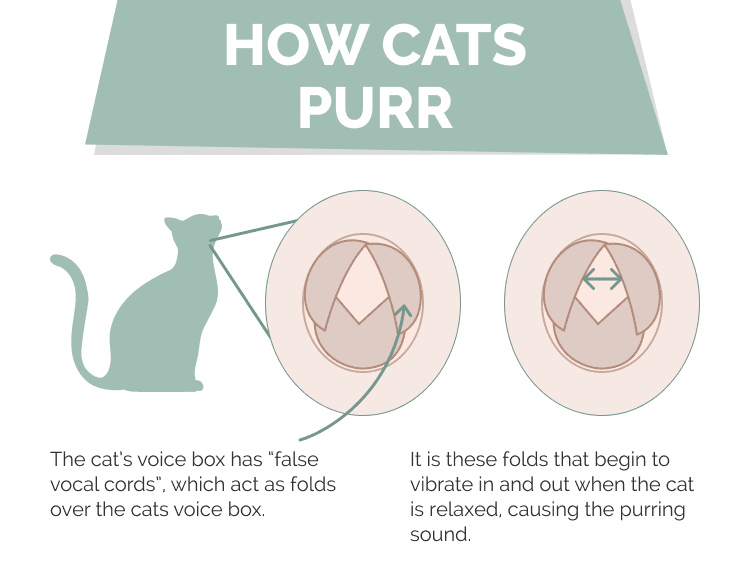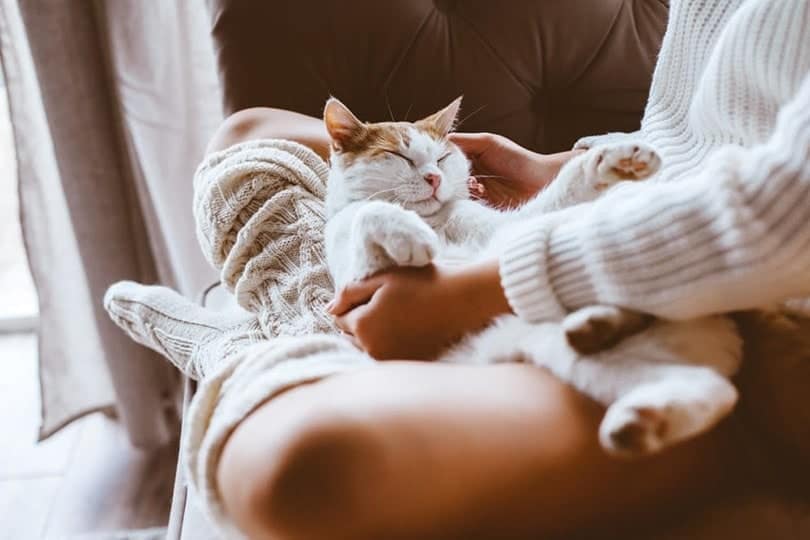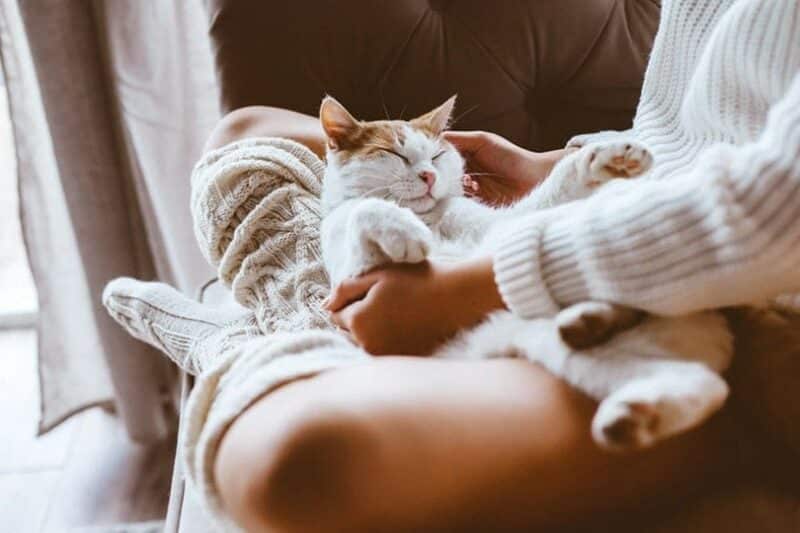Most cat owners are familiar with a purr–that distinctive sound of your cat’s happiness and content. Purring is a way for a cat to express an emotion, but it’s not always a sign of happiness. It can be used to express hunger, fear, or other emotions or even to self-soothe.
Furthermore, not all cats purr. Purring is common among domestic cats, but not all cats. If you are curious to learn more about how cats purr, and the other sounds cats make, read on!
Cats That Purr Can’t Roar and Cats That Roar Can’t Purr
Oddly, most big cats can roar, but they can’t purr. This includes tigers, lions, jaguars, and leopards. Cougars and smaller cats, like bobcats and lynxes, can purr but can’t roar.
Purring happens because of a tightly connected link of delicate bones that travel from a small cat’s tongue to the skull. When the cat vibrates its larynx, it causes the hyoid bones to resonate.
While no one knows exactly why some cats purr, it’s possible that it was developed by mother cats to disguise the mewing of kittens from predators. It may also be a way of communicating with kittens, which are born temporarily blind and deaf.
The delicate bones that create purring in small cats are absent in big cats. Instead, they have tough cartilage that runs from the hyoid bone to the skull, which gives them the flexibility to produce loud roars.
Lions have one of the most fearsome roars in the animal kingdom. Roars can be hard and felt up to five miles away. Tigers have a roar that can be heard for up to two miles, establishing their territory and dominance.

Other Sounds From Big and Small Cats
Along with roaring, lions can “chuff” or moan and groan, but it’s distinctive from the action of purring seen in small cats. This low-intensity sound comes in short, loud bursts, blowing air through the nostrils while the mouth is closed–similar to humans expressing annoyance or exasperation. Big cats use it as a way to communicate greeting or courtship, however.
Tigers, on the other hand, have a roar that’s more like a growl, though other cats can growl. Cheetahs are unique in that they have a purr instead of a roar, despite being larger, and they emit a high-pitched chirping sound.
All cats, both big and small, can growl and hiss. Growling may be to threaten or claim possession, but hissing is almost universally a sign of displeasure. Some researchers believe cats hiss as a defensive mechanism that mimics snakes.
Finally, meowing is found in domestic cats, snow leopards, cougars, cheetahs, and lion cubs. This is used as a way to find each other or request something from another cat, like food or attention. You’ve likely experienced your own cat meowing at you at dinner time or to get some love.

Conclusion
Cats are vocal animals and use sound to communicate a myriad of emotions, but these sounds aren’t universal. Domestic cats have purring in common with small wild cats, while big cats can’t purr but roar instead. Cheetahs are unique among cats and chirp like birds, putting them in a class all their own.
Featured Image Credit: Alena Ozerova, Shutterstock












